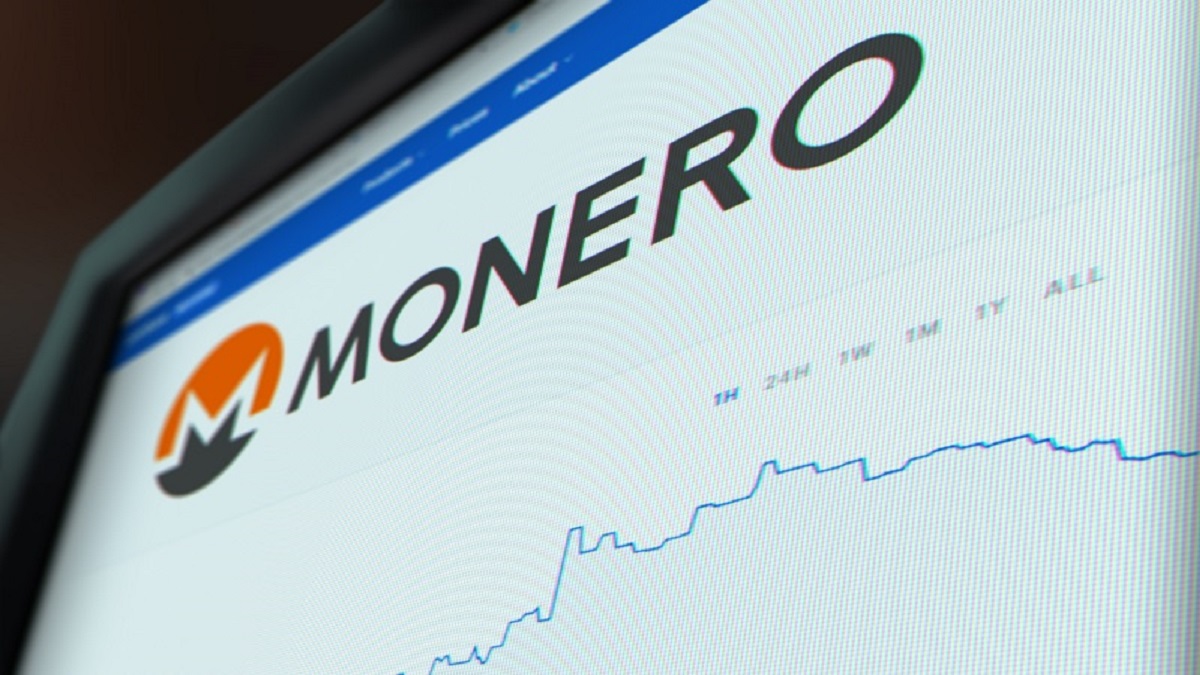As DATs Face Pressure, Institutions Could Soon Look to BTCFi for Their Next Strategic Shift
Key Takeaways
-
Digital Asset Trusts (DATs) are facing increasing pressure due to factors like high fees, limited flexibility, NAV discrepancies, and competition from new investment products.
-
Institutions are poised to shift their focus towards BTCFi (Bitcoin Finance) to explore Bitcoin-native yield, collateral, and liquidity opportunities.
-
BTCFi enables institutions to generate yield from Bitcoin through lending protocols, derivatives, and liquidity provision, transforming Bitcoin into a productive asset.
-
Bitcoin’s substantial market capitalization makes it an ideal collateral asset, facilitating decentralized lending, secured traditional finance loans, and margin trading without liquidation.
-
BTCFi enhances operational efficiency with faster settlement times, reduced counterparty risk, and global market access, driving digital transformation in finance.
Table of Contents
- The Evolving Landscape and Pressure Points for Digital Asset Trusts (DATs)
- Introducing BTCFi: A New Paradigm for Institutional Engagement
- Unpacking Bitcoin-Native Opportunities for Institutions
- The Strategic Imperative: Connecting BTCFi to Business Value
- Challenges and Considerations
- FAQ
- Conclusion
The world of digital assets is in a constant state of evolution, a dynamic landscape shaped by technological innovation, shifting market demands, and evolving regulatory frameworks. For institutional investors, navigating this terrain requires foresight, adaptability, and a keen eye for emerging opportunities. A significant development on the horizon suggests that as Digital Asset Trusts (DATs) face increasing pressure, institutions could soon look to BTCFi for their next strategic shift, exploring bitcoin-native yield, collateral, and liquidity opportunities as the next frontier for strategic deployment. This pivot signifies a maturing market and a deeper understanding of Bitcoin’s foundational role beyond a mere store of value, promising profound implications for financial innovation and operational optimization.
For years, Digital Asset Trusts (DATs) have served as a primary gateway for institutional capital seeking exposure to cryptocurrencies, particularly Bitcoin. These vehicles offered a regulated, familiar structure that allowed traditional investors to participate in the digital asset space without directly holding or managing the underlying assets. DATs provided a bridge, simplifying custody, compliance, and reporting, thereby mitigating some of the operational complexities and perceived risks associated with direct crypto investments. Their rise marked a crucial phase in the institutionalization of Bitcoin, opening doors for pension funds, endowments, family offices, and wealth managers to diversify their portfolios with a nascent, high-growth asset class.
However, the landscape is shifting. The very structures that once made DATs attractive are now beginning to show signs of strain, exerting pressure that compels institutions to reassess their strategies. This pressure is multifaceted, stemming from market dynamics, increasing competition, evolving regulatory clarity, and the inherent limitations of their original design. As the digital asset ecosystem matures, more sophisticated and direct investment pathways are emerging, challenging the dominance and efficiency of traditional DATs.
The Evolving Landscape and Pressure Points for Digital Asset Trusts (DATs)
The journey of institutional crypto adoption has been marked by a gradual but significant learning curve. Initially, the primary concern for institutions was simply gaining exposure to Bitcoin in a compliant and secure manner. DATs fulfilled this need admirably, abstracting away the complexities of private key management, exchange selection, and regulatory ambiguities. They acted as a comfortable wrapper, offering shares that tracked Bitcoin’s price, often with a premium or discount to Net Asset Value (NAV).
However, as the market developed, several factors began to erode the competitive edge of DATs:
High Fees and Expense Ratios:
Many DATs operate with relatively high management fees compared to increasingly competitive alternatives. As the market for crypto investment products expands, institutions are seeking more cost-effective ways to gain exposure and generate returns. These fees, while justifiable in an earlier, less mature market, become less palatable as more efficient structures emerge.
Limited Flexibility and Innovation:
DATs are often rigid in their structure, designed primarily for passive exposure. They typically do not offer options for yield generation, active management, or participation in the broader decentralized finance (DeFi) ecosystem. This limits their appeal for institutions looking to extract more value from their digital asset holdings beyond simple price appreciation.
Arbitrage Opportunities and NAV Discrepancies:
The closed-end nature of many DATs often leads to significant premiums or discounts to their underlying NAV. While this can present opportunities for sophisticated traders, it also introduces additional layers of market risk and inefficiency for long-term holders seeking direct asset exposure. The emergence of spot Bitcoin ETFs in various jurisdictions directly addresses this, offering a much tighter tracking of NAV.
Regulatory Scrutiny and Competitive Products:
As regulators become more familiar with digital assets, the path for more direct investment products, such as spot Bitcoin Exchange-Traded Funds (ETFs), becomes clearer. These ETFs, with their lower fees, tighter NAV tracking, and greater liquidity, pose a direct and formidable challenge to DATs. The approval of such products signals a maturing regulatory environment and provides institutions with superior alternatives.
Lack of Bitcoin-Native Utility:
Perhaps most significantly, DATs typically hold Bitcoin as a dormant asset. They don’t engage with Bitcoin’s intrinsic capabilities for programmability, transaction processing, or its potential within a decentralized financial ecosystem. This oversight becomes increasingly pronounced as the concept of “BTCFi” gains traction.
Expert Take: “The initial appeal of DATs lay in their simplicity and regulatory familiarity during a nascent market phase. However, as the digital asset space matures, institutions are naturally gravitating towards products that offer greater efficiency, lower costs, and more sophisticated engagement with the underlying assets’ intrinsic utility. This evolution is not a rejection of digital assets, but rather a demand for more refined and performant investment vehicles.” – Leading Blockchain Strategist
Introducing BTCFi: A New Paradigm for Institutional Engagement
The pressure on DATs isn’t merely a sign of their decline, but rather an indicator of the market’s progression towards more sophisticated forms of engagement with Bitcoin. This is where “BTCFi” enters the conversation. BTCFi, or Bitcoin Finance, refers to a burgeoning ecosystem of financial services and applications built on or leveraging the Bitcoin network. Unlike traditional DeFi, which largely operates on Ethereum and other smart contract platforms, BTCFi focuses specifically on unlocking Bitcoin’s vast capital and liquidity potential.
For institutions, BTCFi represents a strategic shift from passive holding to active utilization of their Bitcoin assets. It offers the prospect of generating yield, using Bitcoin as collateral, and accessing enhanced liquidity through innovative, bitcoin-native mechanisms. This move is driven by a desire to optimize capital, increase efficiency, and tap into new revenue streams that were previously inaccessible through conventional investment vehicles.
Unpacking Bitcoin-Native Opportunities for Institutions
BTCFi presents a compelling suite of opportunities that connect directly to business efficiency, digital transformation, and financial innovation:
Bitcoin-Native Yield Generation
The idea of generating yield from Bitcoin might seem counterintuitive to those accustomed to traditional finance where interest is paid on deposited capital. However, BTCFi is developing various mechanisms to unlock passive income streams from Bitcoin holdings:
-
Lending Protocols: Institutions can lend their Bitcoin to other market participants through decentralized or semi-decentralized protocols. These protocols, often built on Bitcoin sidechains (like Liquid Network or Stacks) or using cross-chain bridge solutions (like wrapped Bitcoin on Ethereum), enable borrowers to access liquidity by offering collateral in other digital assets or even fiat. The interest earned on these loans provides a direct yield for the institutional lender. This directly translates to financial innovation by creating new credit markets for digital assets.
-
Derivatives and Structured Products: Sophisticated financial instruments built around Bitcoin, such as options, futures, and other structured products, can allow institutions to generate yield through various strategies like covered calls or basis trading. While complex, these products are increasingly becoming accessible in regulated environments, offering new avenues for optimizing capital.
-
Staking-like Mechanisms (Indirect): While Bitcoin itself does not have native staking in the way Proof-of-Stake chains do, innovations are emerging that allow Bitcoin holders to contribute to network security or protocol functionality on other chains (e.g., sidechains or layer-2 solutions) and earn rewards. For instance, protocols building on Bitcoin’s programmability layer might offer incentives for locking up BTC, effectively creating a yield-bearing opportunity.
-
Liquidity Provision in BTC-centric DEXs: As decentralized exchanges (DEXs) and automated market makers (AMMs) evolve to include Bitcoin pairings, institutions can provide liquidity to these pools and earn a share of trading fees, similar to how it works in the broader DeFi ecosystem. This contributes to operational optimization by allowing institutions to act as market makers in a decentralized, always-on environment.
Expert Take: “Moving beyond simply holding Bitcoin, institutions are now looking to actively put their BTC to work. Bitcoin-native yield opportunities represent a significant leap in capital efficiency, transforming Bitcoin from a passive store of value into a productive asset capable of generating consistent returns. This is where true financial innovation for digital assets begins.” – Head of Digital Asset Strategy at a major investment bank
Bitcoin as Collateral
The immense market capitalization and established liquidity of Bitcoin make it an ideal candidate for collateral in both traditional and decentralized financial systems. BTCFi is expanding the ways institutions can leverage their Bitcoin holdings without selling them:
-
Decentralized Lending: Institutions can use their Bitcoin as collateral in decentralized lending protocols to borrow stablecoins or other cryptocurrencies. This allows them to access liquidity for operational expenses, new investments, or arbitrage opportunities without incurring capital gains taxes by selling their BTC. The transparency and immutability of blockchain-based collateral agreements enhance risk management by providing clear, auditable records.
-
Secured Lending in Traditional Finance: As more traditional financial institutions (TradFi) embrace digital assets, the ability to use Bitcoin as collateral for fiat loans is growing. This bridges the gap between the digital and traditional financial worlds, providing institutions with greater financial flexibility and optionality.
-
Margin Trading and Derivatives: Bitcoin’s use as collateral for margin positions in derivatives markets allows institutions to amplify their trading strategies, manage risk exposure, and enhance business efficiency by unlocking capital that would otherwise be dormant.
Enhanced Liquidity and Operational Optimization
BTCFi is inherently designed to leverage Bitcoin’s deep liquidity and robust network for faster, more efficient transactions and settlements.
-
Faster Settlement Times: Unlike traditional banking rails that can take days for international transfers, Bitcoin transactions, especially those leveraging layer-2 solutions, can settle in minutes or even seconds. This vastly improves operational efficiency for businesses involved in global trade, remittances, or cross-border payments.
-
Reduced Counterparty Risk: Decentralized BTCFi protocols reduce reliance on intermediaries, directly mitigating counterparty risk. Smart contracts can automate escrow, collateral management, and settlement processes, providing a higher degree of trust and transparency. This contributes significantly to digital transformation initiatives aimed at streamlining financial operations.
-
Global Market Access: BTCFi platforms operate 24/7, offering institutions unparalleled access to global markets without the constraints of traditional banking hours or geographical boundaries. This expands potential customer bases, facilitates international partnerships, and drives business efficiency on a global scale.
Expert Take: “The power of BTCFi lies not just in new investment products, but in its ability to fundamentally transform financial operations. By leveraging Bitcoin’s inherent security and liquidity, businesses can achieve unprecedented levels of efficiency, reduce settlement times, and unlock new global markets. This is the true essence of digital transformation in finance.” – CEO of a prominent Web3 infrastructure provider
The Strategic Imperative: Connecting BTCFi to Business Value
For business professionals, entrepreneurs, and forward-thinking investors, the shift towards BTCFi is more than just a new crypto trend; it’s a strategic imperative that directly impacts core business objectives:
-
Financial Innovation & New Revenue Streams: BTCFi enables the creation of novel financial products and services, allowing institutions to diversify their offerings and tap into new revenue streams. Whether through lending, liquidity provision, or participation in structured products, the ability to generate yield from a previously inert asset class is a game-changer. This drives financial innovation by expanding the toolkit available to financial engineers and portfolio managers.
-
Operational Efficiency & Digital Transformation: The decentralized, immutable, and programmable nature of Bitcoin-centric finance can drastically improve operational efficiency. Automated processes, faster settlements, and reduced reliance on intermediaries translate into lower costs, reduced errors, and more agile financial operations. Embracing BTCFi is a tangible step towards digital transformation, moving away from legacy systems to a more streamlined, blockchain-powered infrastructure.
-
Enhanced Risk Management & Portfolio Diversification: By providing diverse mechanisms for interacting with Bitcoin, BTCFi allows institutions to refine their risk management strategies. Utilizing Bitcoin as collateral, for instance, can provide liquidity without forced selling. Furthermore, engaging with a distinct and uncorrelated asset class like Bitcoin, through sophisticated BTCFi strategies, offers genuine portfolio diversification benefits, enhancing resilience against traditional market volatility.
-
Capital Optimization: The ability to generate yield or leverage Bitcoin as collateral means that institutional capital is no longer sitting idle. BTCFi ensures that every unit of Bitcoin held by an institution is a productive asset, actively contributing to returns or facilitating other financial activities. This represents a significant advancement in capital optimization.
Challenges and Considerations
While the promise of BTCFi is significant, institutions must also consider the inherent challenges. Regulatory clarity, while improving, still varies globally. Technical complexities, security risks associated with new protocols, and the need for robust risk management frameworks remain paramount. Institutions will require sophisticated infrastructure, expertise in smart contract security, and a deep understanding of decentralized governance models to navigate this evolving landscape successfully. Moreover, the interoperability between the Bitcoin main chain and various layer-2s or sidechains presents its own set of technical considerations.
FAQ
What are Digital Asset Trusts (DATs)?
DATs are regulated investment vehicles that provided institutions a gateway to cryptocurrency exposure, particularly Bitcoin, by simplifying custody, compliance, and reporting without direct asset management.
Why are DATs facing increasing pressure from institutions?
DATs face pressure from high fees, limited flexibility, NAV discrepancies, competition from spot Bitcoin ETFs, evolving regulations, and their inability to engage with Bitcoin’s native utility for yield generation or collateral.
What is BTCFi?
BTCFi, or Bitcoin Finance, is an emerging ecosystem of financial services built on or leveraging the Bitcoin network, focused on unlocking Bitcoin’s capital, liquidity, and yield generation potential for active utilization.
What key opportunities does BTCFi offer institutional investors?
BTCFi offers Bitcoin-native yield generation (lending, derivatives, liquidity provision), leveraging Bitcoin as collateral for loans, and enhanced liquidity with faster settlements and reduced counterparty risk, leading to operational optimization and financial innovation.
What are the main challenges for institutions adopting BTCFi?
Challenges include evolving regulatory clarity, technical complexities, security risks associated with new protocols, the need for robust risk management frameworks, and interoperability concerns between the Bitcoin main chain and various layer-2 solutions.
Conclusion
The impending strategic shift from DATs to BTCFi marks a pivotal moment in the institutional adoption of digital assets. As Digital Asset Trusts grapple with pressures from market competition, evolving regulations, and the demand for greater capital efficiency, BTCFi emerges as a compelling alternative. It promises to unlock Bitcoin’s full potential as a productive asset, offering institutions unprecedented opportunities for yield generation, collateralization, and enhanced liquidity.
For business professionals and entrepreneurs, understanding and strategically integrating BTCFi solutions is no longer optional but essential for staying ahead in a rapidly digitizing global economy. This paradigm shift embodies the future of financial innovation, offering pathways to unparalleled business efficiency, profound digital transformation, and robust operational optimization. The journey into BTCFi is an investment not just in a digital asset, but in the future of finance itself. As this new chapter unfolds, continuous education and strategic foresight will be critical for those looking to harness the power of Bitcoin’s native finance and redefine the contours of the global financial landscape.




